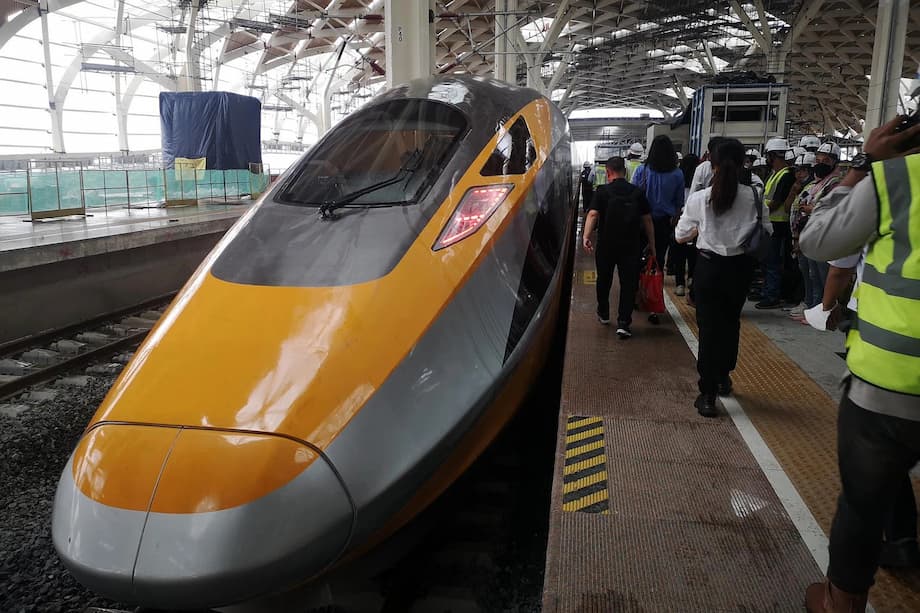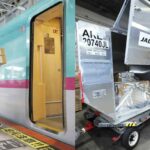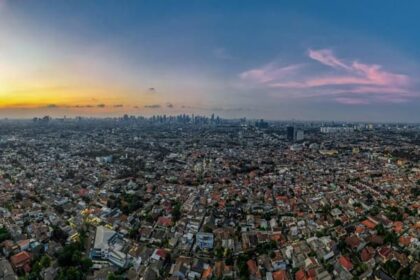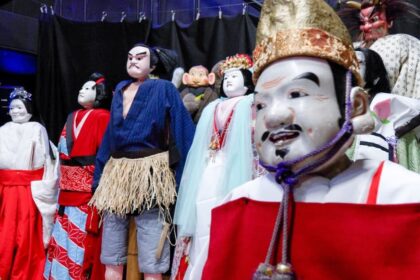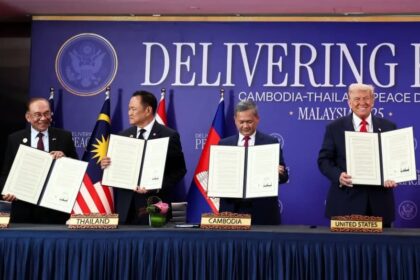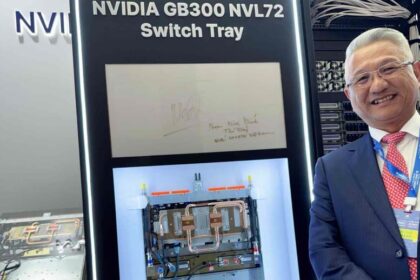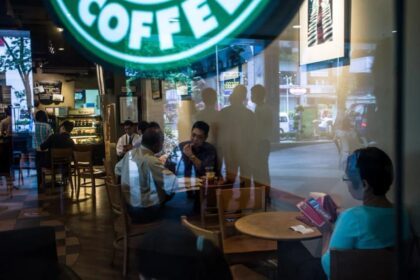Why Indonesia is negotiating the debt now
Indonesia has begun formal discussions with China to restructure the debt tied to the Whoosh high speed railway that links Jakarta and Bandung. The government says the goal is to stabilize the project’s finances and reduce the risk that the operator could fail to meet its obligations. The talks center on loans that funded most of the railway’s construction, a sum that grew as delays and cost increases pushed the final bill well beyond the original estimate.
- Why Indonesia is negotiating the debt now
- What is Whoosh and how the financing works
- Delays, cost overruns and how the bill grew
- Demand and revenue, are ticket sales enough
- What a restructuring could include
- Who will carry the burden
- Politics and the China factor
- Expansion to Surabaya, opportunity and risk
- What riders and the economy gain
- Quick Facts
The 142 kilometer line, which began passenger service in October 2023, is a first for Southeast Asia. It cuts travel between the capital and Bandung to about 45 minutes, a trip that can take three hours or more by road. The line quickly became a symbol of Indonesia’s infrastructure ambitions and of close economic ties with China. It also became a test of whether a capital intensive rail link can earn enough, fast enough, to carry a large debt load.
Investment Minister Rosan Roeslani, who also leads Indonesia’s sovereign wealth fund Danantara, has framed the negotiations as a push for a full fix and not a temporary patch. He stressed that the state wants a deal that puts the project on a stable footing for years to come.
Rosan Roeslani said the government wants a comprehensive reform so that after the restructuring there will be no more issues like the possibility of default in the future.
What is Whoosh and how the financing works
Whoosh connects Jakarta’s eastern gateway with West Java and is designed for speeds up to 350 kilometers per hour. Trains typically make the trip in about 40 to 45 minutes, providing a significant cut in travel time compared with a highway journey that can stretch past three hours in heavy traffic. The line is part of a broader plan to upgrade transport across Java and to spur new economic activity around stations.
How the loans and ownership are structured
The project cost is commonly cited at about 7.3 billion dollars. About 75 percent of the funding came from loans provided by China Development Bank, with the remainder supplied by shareholders as equity. The operator is PT Kereta Cepat Indonesia China, or KCIC, a joint venture of Indonesian and Chinese state companies. The Indonesian consortium, PT Pilar Sinergi BUMN Indonesia, holds 60 percent, and the Chinese partner holds 40 percent.
PSBI is led by PT Kereta Api Indonesia (KAI), the national railway, which owns roughly 58.5 percent of PSBI. It is joined by construction firm Wijaya Karya, toll road operator Jasa Marga, and a plantation company that holds a small stake. KCIC and its shareholders were responsible for about a quarter of the construction cost through equity, while the bank loans funded the balance.
The loan structure matters because fare revenue must cover operating costs and still leave enough to service debt. Timing also matters. Major rail projects often need several years to ramp up ridership and revenue, while interest and principal fall due on a fixed schedule. That mismatch can create stress in the early years if demand is weaker than forecast.
Delays, cost overruns and how the bill grew
Construction started in 2016 with an initial target to open in 2019. Land acquisition hurdles, engineering changes and pandemic restrictions pushed the launch to 2023. The delays, plus higher construction and financing costs, produced a cost overrun of about 1.2 billion dollars that was formalized in 2023. The original loan reportedly carries a 2 percent annual interest rate, while additional borrowing for the overrun carries a higher rate near 3.4 percent.
The result is a project that is largely built and operating, yet more expensive than first planned and carrying pricier debt for the last tranche of construction. That is not unusual for large transport projects, but it leaves a narrower margin of safety in the early years of service, especially if ridership grows more slowly than expected.
Demand and revenue, are ticket sales enough
Ridership has grown, but it has not met the most optimistic forecasts. The line recorded about 2.9 million passengers in the first half of 2025, an increase from the prior year. Cumulative totals in the first two years of operation are in the tens of millions. Even so, lawmakers and company executives say ticket sales alone do not yet cover the full stack of operating costs and debt service. That shortfall explains why the operator and its shareholders are seeking relief on loan terms.
Feasibility studies once pointed to daily ridership that, in a low case, could reach around 50,000 passengers, with a higher case near 76,000. Executives and legislators now say actual demand has been closer to the lower scenario and at times well below it. Prices, last mile connections in Bandung, and travel patterns that still favor cars for door to door trips all play a role. The operator has added feeder buses and adjusted schedules, and the passenger base has been rising, though the revenue gap remains a concern.
Pressure from the finances of PSBI and KAI is now front and center. PSBI booked losses in 2024 and in the first half of 2025, and KAI reported a net loss through June 2025, citing the burden of the high speed project. Those numbers have raised alarms in parliament.
KAI’s president director Bobby Rasyidin, speaking to lawmakers, warned that the project’s finances cannot be ignored and require active management with the government and the sovereign fund.
Bobby Rasyidin told legislators that the debt burden from Whoosh is a ticking time bomb.
The warning was not a call to downsize the service. It was a push to reset loan terms so that the operator can continue to run trains reliably while the system builds a larger base of regular travelers. Ridership growth, integrated ticketing with conventional rail and better station access can help. Restructuring can buy the time needed for those steps to pay off.
What a restructuring could include
Officials have not released specific proposals, yet common tools in project finance give a sense of the menu. These include lengthening the loan tenor to lower annual payments, reducing interest rates on the cost overrun portion, adding a grace period before full principal repayment starts, or converting part of the debt into equity held by a public vehicle. Any package would need to keep the Chinese lender whole over time while giving the operator a viable near term cash flow profile.
Danantara, the state investment fund, has been tasked with driving the talks and shaping the options. The fund’s leadership has stressed that the solution needs to solve the underlying mismatch between cash flow and obligations and avoid moving the stress from one state entity to another.
Danantara’s chief operating officer Dony Oskaria said the steps for settlement must be comprehensive and not disrupt the performance of PT Kereta Api Indonesia.
The Ministry of State Owned Enterprises has also floated a rebalancing of roles. Under a potential scheme, KAI would focus on railway facilities and operations, and the state would take responsibility for core infrastructure such as rails and stations. That split would require a renegotiation with the Chinese partner, because the project is a joint venture. It would also require a clear plan for how the state would finance and maintain the assets it assumes.
Who will carry the burden
The immediate challenge is concentrated at KAI and PSBI, which have limited room on their balance sheets. One path under discussion is for Danantara to assume part of KCIC’s obligations and refinance them on longer, cheaper terms. Another is a debt to equity conversion that gives a public vehicle a larger stake in the operator in exchange for relief on loan payments. Some lawmakers have suggested turning Whoosh into a state asset, which would move debt service to the budget, while others prefer to invite new investors, including the public, through bond sales or private placements.
Each option carries trade offs. Moving more liabilities into Danantara could reduce the fund’s near term returns and concentrate risk. A direct state assumption would require fiscal space and would put taxpayer funds on the line. Opening the capital structure to more public investors could provide cash, yet investors would ask for clear rules on fares, subsidies and expansion plans. The one constant in all approaches is the need to ring fence day to day operations so that safety, punctuality and service quality do not suffer while the financial model is reset.
Politics and the China factor
Whoosh is a flagship of Indonesia China cooperation and is often cited in high level meetings as a successful example of partnership. The line sits within broader connectivity goals and is frequently linked to a vision of a more integrated Java corridor. Both sides have a stake in keeping the service reliable and the finances stable. China will weigh the value of the relationship and the project’s profile against the need to preserve financial discipline at its policy bank. Indonesia will seek flexibility without damaging its reputation in capital markets.
Debt restructuring is a common feature in long lived infrastructure projects. It is not a default. It is a way to match a project’s cash flow reality with its obligations, especially after shocks like a global pandemic and unexpected construction hurdles. A well designed package can lower near term stress, maintain lender confidence and set measurable targets for revenue growth and efficiency improvements.
Expansion to Surabaya, opportunity and risk
President Prabowo Subianto has expressed interest in extending the line east toward Surabaya. A legal framework for the extension is being prepared, and the idea has support because it would connect major cities across Java. Any expansion would magnify the financial stakes. Authorities say financing has to be sustainable and that lessons from the first segment will shape the model for any next phase.
Extending to Surabaya could boost ridership systemwide, create new markets and spread fixed costs. It could also expose the operator to higher capital needs and construction complexity. Policymakers are signaling that the current restructuring and a clear operating plan for Whoosh must come first. That sequence would allow the government and lenders to evaluate the case for expansion with real performance data, not just forecasts.
What riders and the economy gain
For travelers, Whoosh has delivered what it promised. Trips that once took hours now take well under one hour. Commuters save time, business travelers can schedule same day meetings, and families can avoid uncertainty on congested roads. The operator has added feeder services and has been refining schedules. Survey data and passenger counts suggest that more people are trying the train as word of mouth spreads and as service patterns mature.
Beyond the ticket gates, the line supports jobs during operations and in businesses that cluster around stations. Developers have proposed projects near Halim and in West Java to tap new demand. The full value of these benefits depends on predictable service and on better integration with local transport networks. The government’s focus on an orderly restructuring is in part a defense of those gains. A stable financial base makes it easier to invest in station access, digital ticketing, and promotions that can broaden the rider base.
Indonesia is not unique in facing early financial strain on a new high speed service. Many systems need a few years to reach stable demand. Policymakers point to steady growth in passenger numbers in 2025 and to rising public familiarity with the service. The task now is to match costs and obligations with actual revenue, while keeping trains running safely and on time.
Quick Facts
- Indonesia opened talks with China to restructure debt for the Whoosh Jakarta Bandung rail, aiming to reduce default risk and stabilize finances.
- Total project cost is about 7.3 billion dollars. Roughly 75 percent was financed by loans from China Development Bank and the rest by shareholder equity.
- The original loan carries about a 2 percent interest rate. Additional borrowing for a 1.2 billion dollar cost overrun carries about a 3.4 percent rate.
- KCIC operates the line. The Indonesian consortium PSBI owns 60 percent, led by KAI, with the Chinese partner holding 40 percent.
- PSBI recorded losses in 2024 and in the first half of 2025. KAI reported a net loss through June 2025, tied in part to the project’s debt burden.
- Ridership is growing but below early forecasts. About 2.9 million passengers rode in the first half of 2025, and cumulative totals in the first two years are in the tens of millions.
- Restructuring options include longer maturities, rate reductions, grace periods, or a debt to equity swap, likely coordinated by the sovereign wealth fund Danantara.
- The government is evaluating a split where KAI focuses on facilities and operations while the state assumes core infrastructure, subject to talks with the Chinese partner.
- Plans to extend the line toward Surabaya remain under review. Officials say any expansion must come with sustainable financing and lessons applied from the first segment.


